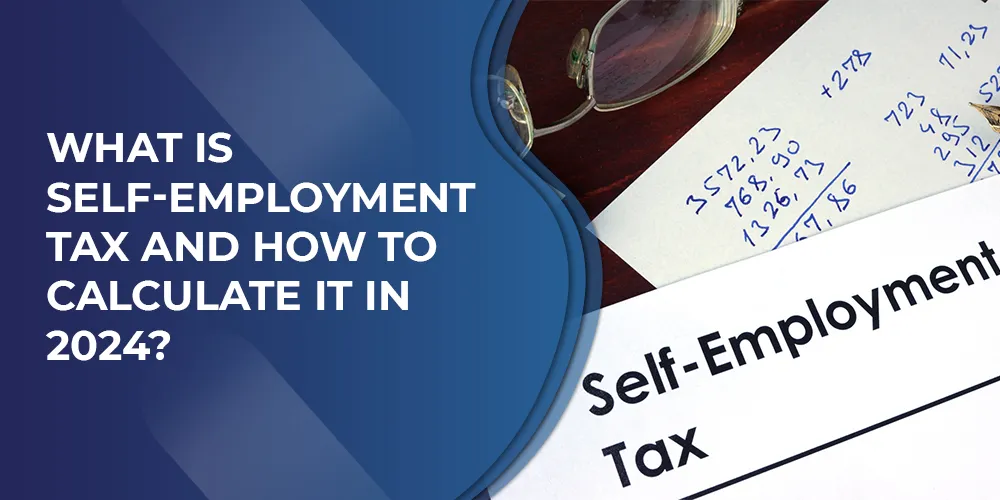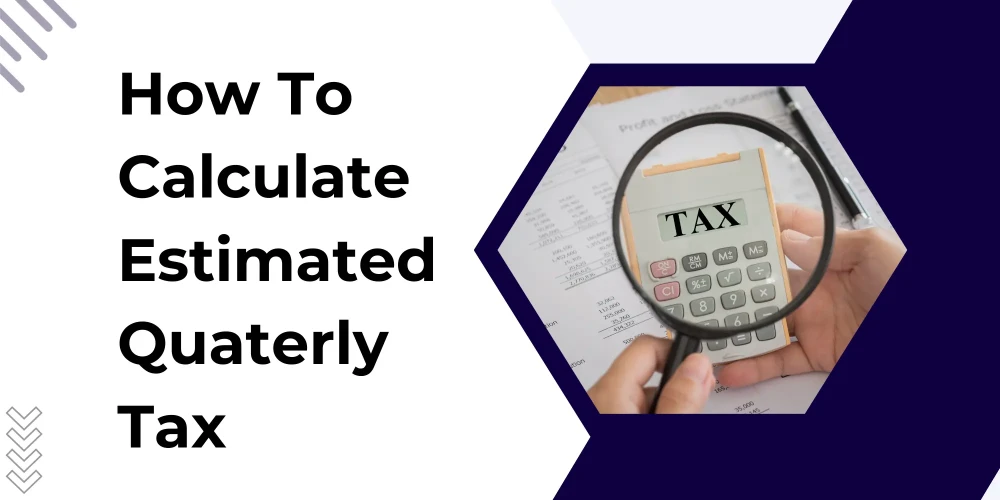Table of Contents
Being self-employed comes with many benefits, but it also comes with the responsibility of handling your own taxes - including the self-employment tax. As a self-employed individual, it's crucial to understand what the self-employment tax is, how it's calculated, and the valuable benefits it provides. Whether you're a seasoned entrepreneur or just starting out on your self-employment journey, knowing all about self-employment taxes will empower you to meet your tax obligations with confidence and ensure you're taking full advantage of the protections and safety nets the self-employment tax affords. Here’s everything you need to know to make sure you're prepared to tackle self-employment taxes head-on this year:
What is Self-Employment Tax?
For self-employed individuals, the self-employment tax serves as a crucial contribution to the Social Security and Medicare programs. Unlike traditional employees who split payroll taxes with their employers, those who work for themselves bear the responsibility of paying the entire amount. This tax is a mandatory obligation for anyone earning income through self-employment. The tax encompasses two distinct components.
Social Security Program- The first portion is allocated towards the Social Security program, which provides a financial safety net for retirement, disability, and survivorship benefits. This segment of the tax ensures that self-employed individuals have access to these vital resources, just as their counterparts in traditional employment do.
Medicare Program- The second component of the self-employment tax is dedicated to funding the Medicare program, which offers essential health insurance coverage for individuals aged 65 and older, as well as those with certain disabilities. By contributing to this portion of the tax, self-employed workers secure their eligibility for this critical healthcare safety net later in life.
The self-employment tax rate is calculated annually by the Internal Revenue Service (IRS) and is subject to change each year. However, it typically comprises a combined rate that mirrors the total payroll taxes paid by traditional employees and their employers. This approach ensures that self-employed individuals contribute their fair share towards these essential social programs, just as their employed counterparts do through payroll deductions.
While the responsibility of paying the full self-employment tax may seem burdensome, it is a necessary investment in one's future financial security and access to vital government-sponsored benefits. By diligently fulfilling this obligation, self-employed individuals not only remain compliant with tax regulations but also safeguard their eligibility for the Social Security and Medicare programs, which can provide invaluable support during retirement or in the event of disability.
2024 Self-Employment Tax Rates Changes
In 2024, self-employed individuals will face a self-employment tax rate of 15.3%. This figure is the combined total of two distinct components as discussed above. The Social Security portion of the self-employment tax stands at 12.4% for the 2024 tax year on a minimum wage base of $168,600. Any income beyond this threshold is exempt from the Social Security portion of the tax.
The Medicare tax rate, which remains steady at 2.9% for your net income in 2024. has no income cap compared to social security tax – it applies to the entirety of an individual's self-employment earnings, regardless of the amount. While the Social Security portion aims to provide retirement, disability, and survivorship benefits, the Medicare tax helps fund the vital healthcare insurance program that serves as a safety net for millions of Americans.
Furthermore, The Additional Medicare Tax is a 0.9% tax that applies to higher-income individuals and couples. Specifically, it is levied on net self-employment income that exceeds $200,000 for individual taxpayers or $250,000 for married couples filing a joint tax return. This extra tax only applies to the portion of self-employment income that goes above those respective thresholds.
By understanding the nuances of these tax rates and their respective income thresholds, self-employed individuals can better prepare for their annual tax obligations. Proper planning and diligent record-keeping are essential to accurately calculating one's self-employment tax liability and ensuring compliance with the ever-evolving tax regulations.
Calculating Your Self-Employment Tax
Calculating your self-employment tax involves a two-step process. Let's break it down:
Step 1: Determine Your Net Earnings
Your net earnings from self-employment are calculated by subtracting your allowable business expenses from your total business income (gross income). This net profit is the amount subject to self-employment tax.
To determine your net earnings, start by tallying up your gross income from all self-employment activities. This includes income from services, sales of products, and any other business-related revenues.
Next, subtract your qualified business expenses from your gross income. Common deductible expenses include:
- Office supplies and equipment
- Marketing and advertising costs
- Business insurance premiums
- Business-related travel expenses
- Home office expenses (if eligible)
- Vehicle expenses for business use
- Professional fees (legal, accounting, etc.)
The IRS provides a comprehensive list of approved deductions in Publication 535. Consulting a tax professional or utilizing tax preparation software can also help ensure you claim all eligible deductions.
Step 2: Apply the Tax Rate
Once you've determined your net earnings from self-employment, follow these steps to calculate your total self-employment tax for the year:
- Find your net earnings from self-employment on line 2 of Schedule SE.
- On line 6 of Schedule SE, multiply your net earnings from self-employment (line 2) by 92.35% to find the amount subject to self-employment tax.
- On line 7 of Schedule SE, find the maximum amount of earnings subject to Social Security tax for the year.
- On line 8a of Schedule SE, enter your W-2 wages subject to Social Security tax.
- Subtract line 8a from line 7. The result will be on line 9.
- On line 10, multiply the smaller of line 6 or line 9 by 12.4% to calculate the Social Security tax portion of your self-employment tax.
- On line 11, multiply line 6 by 2.9% to calculate the Medicare tax portion of your self-employment tax
Your total self-employment tax for the year is the sum of lines 10 and 11.
Let’s Understand this with a Practical Example
Given below is the screenshot of the Self-employment tax form that mentions the indicated income for a freelance graphic designer:



Scenario 1:
Mary a freelance graphic designer with the following information for 2023:
- Her income from services: $56,167
To calculate her net earnings:
- Multiply her income with 92.35% (as mentioned in Line 4a) which is $56,167 x 0.9235 = $51870
Since her income is below the threshold amount of $160200 for 2023, Mary will only file Medical taxes of 2.9% (mentioned in line 11) for which her taxes would be:
$51870 x 0.29= $ 1504
The Tax is then further deducted by 50% (as mentioned in line 13 as per schedule 1 form 1040) that amounts to $752. So the total self employment tax for Mary would be $752.
Scenario 2:
Taylor a freelance graphic designer with the following information for 2024:
- Gross income from design services: $190,000
To calculate her net earnings:
Multiply her income with 92.35% as mentioned in Line 4a which is $190,000 x 0.9235= $175,465
Since Taylor exceeds the threshold income of $168,600 for 2024, she would have to pay both social security tax (12.4 %) and medicare tax (2.9%) as reported on line 10 and 11 of the form i.e 15.3% as self-employment tax.
Her self-employment tax would be:
$175,465 x 0.153 = $ 26,846
Taylor’s total self-employment tax for 2024 is $26,846
Benefits of Paying Self-Employment Tax
While the obligation to pay self-employment tax may seem like a financial burden, it is an investment in a comprehensive safety net that offers numerous valuable benefits. By diligently fulfilling this tax responsibility, self-employed individuals secure access to a range of crucial programs and safeguards.
Retirement Security:
One of the primary advantages of paying self-employment tax is the ability to qualify for Social Security retirement benefits upon reaching the eligible age. These benefits provide a steady stream of income during retirement years, offering much-needed financial security after a lifetime of hard work and self-employment. Additionally, consistent tax payments ensure eligibility for Medicare coverage, a vital healthcare program that helps alleviate the financial strain of medical expenses in later life.
Disability Protection:
Furthermore, the self-employment tax serves as a gateway to Social Security disability benefits. In the event of a debilitating illness or injury that prevents an individual from working before reaching retirement age, these disability benefits can provide a crucial financial lifeline. This safety net offers peace of mind, knowing that one's income will not be entirely disrupted by unforeseen circumstances.
Survivor Benefits:
Perhaps one of the most compelling benefits of paying self-employment tax is the potential for survivors benefits. If a self-employed individual passes away, their surviving spouse and children may be eligible to receive a portion of the deceased's Social Security benefits based on their earnings record. This financial support can be invaluable for families facing the emotional and economic challenges of losing a loved one and primary breadwinner.
By consistently meeting their self-employment tax obligations, self-employed individuals not only remain compliant with tax regulations but also invest in a comprehensive system of benefits and protections. These programs offer a sense of security, knowing that they and their families will have access to essential resources during retirement, disability, or the unfortunate event of premature death. In essence, paying self-employment tax is a prudent investment in one's future and the well-being of their loved ones.
Tips for Managing Self-Employment Tax
Handling self-employment taxes can be challenging, but these tips can help make the process smoother:
- Make Quarterly Estimated Tax Payments: The IRS requires self-employed individuals to make estimated tax payments quarterly if they expect to owe $1,000 or more in taxes for the year. Failing to make these payments can result in penalties and interest charges.
- Set Aside Money for Taxes: Since taxes are not automatically withheld from your income, set aside a portion (around 25-30%) of each payment you receive to cover your eventual tax bill.
- Keep Detailed Records: Maintain meticulous records of your income and expenses throughout the year. Good documentation will make calculating your net earnings and preparing your tax return much easier.
- Hire a Professional: Consider working with a qualified tax professional, especially if your tax situation is complex. They can ensure you take advantage of all available deductions and credits while remaining compliant.
- Utilize Tax Software: User-friendly tax preparation softwares can guide you through the process and help you accurately calculate your self-employment tax.
- Separate Business and Personal Finances: Maintain separate bank accounts and credit cards for business and personal use to simplify tracking expenses and income.
- Take Advantage of Retirement Plans: Contribute to a retirement plan like a Solo 401(k) or SEP IRA to reduce your taxable income while saving for the future.
- Stay Organized: Implement a system for organizing receipts, invoices, and other financial documents to streamline tax preparation and make it easier to substantiate deductions if audited.
Filing Your Tax Return with Self-Employment Tax
When it comes time to file your annual tax return, there are specific forms and schedules you'll need to complete to report your self-employment income and calculate your self-employment tax liability. Here's a step-by-step guide to ensure you're covering all the necessary bases:
Step 1: Complete Schedule C
The first step is to prepare Schedule C (Form 1040), which is where you'll report all of your business income, expenses, and net profit or loss from your self-employment activities. This form requires you to provide detailed information about your gross receipts, cost of goods sold, and various deductible expenses related to your business operations.
Step 2: Calculate Self-Employment Tax on Schedule SE
Once you've determined your net earnings from self-employment on Schedule C, you'll need to transfer that figure to Schedule SE (Form 1040). This is where you'll calculate your actual self-employment tax owed for the year by applying the appropriate tax rate to your net earnings.
Step 3: Transfer Self-Employment Tax to Form 1040
After calculating your self-employment tax on Schedule SE, you'll need to transfer that amount to your Form 1040, which is your individual income tax return. The self-employment tax you calculated will be included as part of your total tax liability for the year.
Step 4: Report Additional Income and Deductions
In addition to reporting your self-employment income and tax, you'll also need to include any other sources of income you may have received during the year, such as wages from employment, interest, dividends, or capital gains. You'll also have the opportunity to claim any deductions or credits you may be eligible for, which could potentially reduce your overall tax liability.
Step 5: File Your Return
Once you've completed all the necessary forms and schedules, you'll be ready to file your tax return. You can choose to file electronically or by mail, depending on your preference. If you're working with a tax professional, they will typically handle the filing process for you.
It's important to note that most tax preparation software programs will guide you through these steps seamlessly, making it easier to ensure you're completing the necessary forms accurately and compliantly. However, if you have a complex tax situation or require additional assistance, it may be beneficial to seek the guidance of a qualified tax professional.
Conclusion
Understanding and properly calculating your self-employment tax is a critical responsibility for anyone who is self-employed. While it may seem daunting, breaking it down into simple steps and staying organized can make the process much more manageable. Remember, paying self-employment tax not only ensures you remain compliant with the IRS but also provides you with valuable Social Security and Medicare benefits down the road. Consulting professionals and utilizing available resources can further simplify the process and provide peace of mind. If you need assistance with self-employment tax planning, preparation, or any other accounting needs, NSKT is here to help. Our team of experienced CPAs and tax professionals specialize in serving self-employed individuals and small businesses. Contact us today to learn more about our services and how we can support your entrepreneurial journey.







